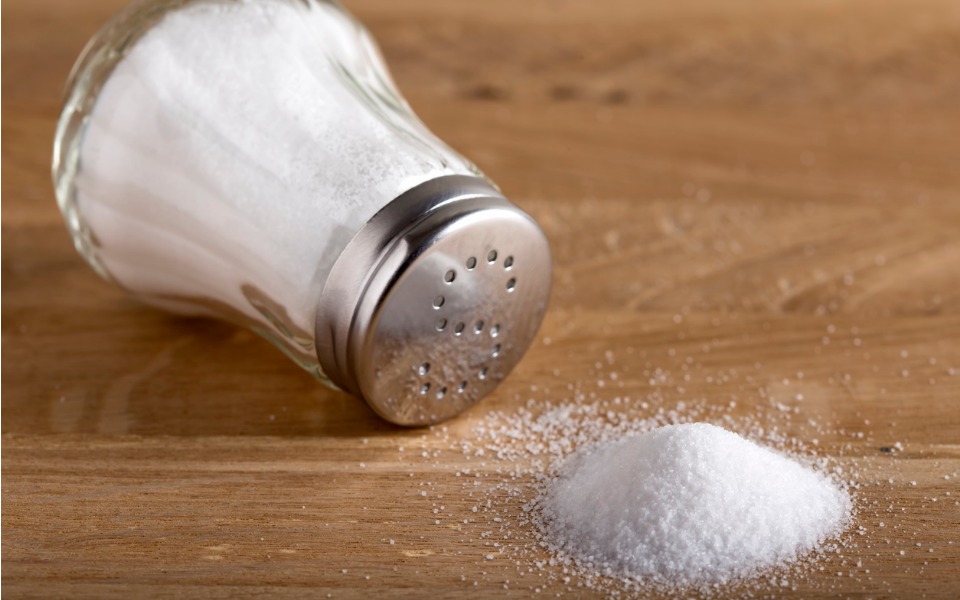
Non-iodised salt affects Tamil Nadu's battle against iodine deficiency
Despite being banned in Tamil Nadu, the availability of non-iodised salts in the domestic markets, is severely affecting the state’s fight against iodine deficiency.

Despite being banned in the state, non-iodised salt is turning out to be a challenge to Tamil Nadu’s fight against iodine deficiency.
According to the World Health Organisation, salt is the best carrier of iodine, and the prescribed limit for iodine in salt is 30 parts per million (ppm) during production and 15 ppm at consumption level.
However, in Tamil Nadu, the availability of non-iodised salts in the domestic markets, despite being banned, is severely affecting the state’s fight against iodine deficiency.
An ongoing study in five districts of the state has shown that 12 per cent of school students suffer from iodine deficiency.
The study of urine samples of 1,496 government school students in the age group of six to 12 years in Kanyakumari, Thanjavur, Thoothukudi, Villupuram and Nilgiris districts has shown that at least 188 (13 per cent) of these students had mild, 141 (nine per cent) had moderate and 179 (12 per cent) had severe iodine deficiency.
ALSO READ | Study claims only 3% women in India work out regularly
While 416 (28 per cent) of them had excessive iodine levels, only 572 (38 per cent) had adequate levels, the study showed. The median urinary iodine concentration of 100–199 micro gram per litre (mcg/l) in children and adults is considered to be adequate.
Speaking to The Federal, Dr. A Somasundaram, additional director at the Directorate of Public Health said that non-iodised salt is being pushed into domestic markets due to the need for more buyers.
“Non-iodised salt is manufactured by simply drying up the salt water on the shores in some places. It is used in agriculture and veterinary fields, but in the need of more buyers, it is being pushed into the domestic market,” Dr. Somasundaram.
On a positive note, consumption of iodised salt increased from 65 to 82 per cent in a decade since 2005-2006, the National Family Health Survey-4 (2015-16) had revealed. Yet, the uneven consumption patterns across districts remain a challenge.
Sources in the State Food Safety Department said that there are seasonal producers of salt in the coastal areas of Thoothukudi, Nagapattinam and Ramanathapuram. “At least half of them do not iodise the salt they sell. They also manage to introduce them in the market through fake labels,” they said.
Another source revealed that random raids and searches conducted on tip-offs have helped them seize samples of non-iodised salts time and again. “In such cases, when we find them not complying with food safety standards, we seize the whole lot from the shop.”
ALSO READ | Decoding Huntington’s disease: NIMHANS hosts first conference in India
Fighting the deficiency
The National Iodine Deficiency Disorders Control Programme in 1991, Tamil Nadu, in the 1990s had identified about 21 districts with iodine deficiency.
To combat the deficiency, the state has been studying the levels in five districts every year to come up with programmes for addressing the same.
According to Dr. Somasundaram, the focus is more on school children since iodine deficiency poses severe threat to their health. “Iodine deficiency can affect thyroid levels resulting in goitre, affect the children’s intelligence quotient and have an adverse impact on menstrual cycles in girls.”
Besides, iodine deficiency is one of the main cause of impaired cognitive development in children.
To address the deficiency, the public health official said that a special cell has also been constituted. “We have been testing the samples we collect from different places we conduct studies in to see how we can ensure standardisation of the salt consumed.”
At a global level, the number of countries where iodine deficiency is a public health problem has halved over the past decade, according to a new report on iodine status. Currently, only 54 countries still remain iodine-deficient.

